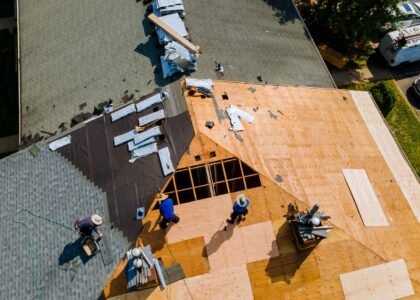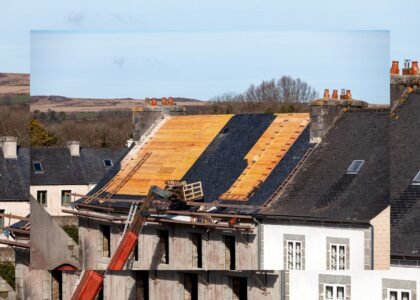Introduction
A roof replacement is a major home improvement project. Knowing what to expect from start to finish can help you plan and reduce stress. This post walks through the typical process, timeline, what you’ll see on the job, and how things are done in Everett, WA.
Step‐by‐Step Roof Replacement Process
Below is a breakdown of what most roof replacement projects include:
| Phase | What Happens |
|---|---|
| Consultation & Assessment | Experts examine current roof, spots of damage or rot, discuss homeowners’ needs, inspect structure. |
| Material Selection | Choose roofing style, materials (asphalt, metal, cedar, membranes), colors, ventilation system. |
| Work Area Preparation | Protect landscaping, surrounding surfaces; set up safety zone. |
| Removal of Old Roofing | Strip shingles/underlayment/flashings; expose roof deck. |
| Substrate & Deck Repair | Replace or fix damaged wood or decking; ensure structural integrity. |
| Install Underlayment & Flashing | Moisture barrier laid down; flashing around chimneys, vents, valleys. |
| Vent Install & Weatherproofing | Proper ventilation to avoid moisture issues/discoloration; water‐shedding design elements added. |
| New Roofing Material Installation | Install chosen material correctly: alignment, fastening, proper overlaps. |
| Clean Up & Final Inspection | Remove all debris; inspect seams, roof edges, valleys; ensure proper water flow. |
Typical Timeline for Roof Replacement in Everett
Several factors affect how long a roof replacement takes. Here’s a rough guideline:
- 1-2 days for smaller, simpler roofs (straight slope, few obstructions)
- 2-4 days for medium size, more complexity (multiple roof planes, valleys, skylights)
- 4-6 days (or more) for large homes, steep slopes, multiple roofing materials, or custom detailing
Weather delays (rain, high winds) may impact timing. Everett’s frequent rain may require scheduling flexibility.
Key Challenges to Watch For
During the project, some issues may arise. Being aware helps prevent surprises:
- Hidden damage under old roofing (rot, mold, structural issues)
- Ventilation or insulation not being sufficient
- Flashing around skylights, chimneys, vents that aren’t properly sealed
- Roof valleys or complex roof geometry — increased labor and detail work
Impacts on Homeowners
What to expect during the job:
- Noise: Removing shingles, hammering, material delivery
- Foot traffic on roof, possible debris: Though contractors usually protect surroundings
- Weather interruptions: Rain or wind might pause work or require protective measures
- Access restrictions: Ladders, materials, safety zones around the perimeter
Understanding these helps you plan accordingly — maybe move vehicles, cover garden furniture, store items sensitive to dust or vibration.
After Installation: What Comes Next
Once the roof is replaced:
- Final clean-up: contractors should remove all debris and nails
- Inspection of roof line, flashing, valleys, ridges to make sure water flows correctly
- Maintain your roof: inspect, clean gutters, trim overhanging branches, monitor growth of moss/algae
These steps help ensure the investment in your new roof lasts as long as possible. For tips on maintaining after replacement, explore the “Roof Replacement” page here: Roof Replacement. If you’re ready to begin, you can reach our team via Contact Us.



